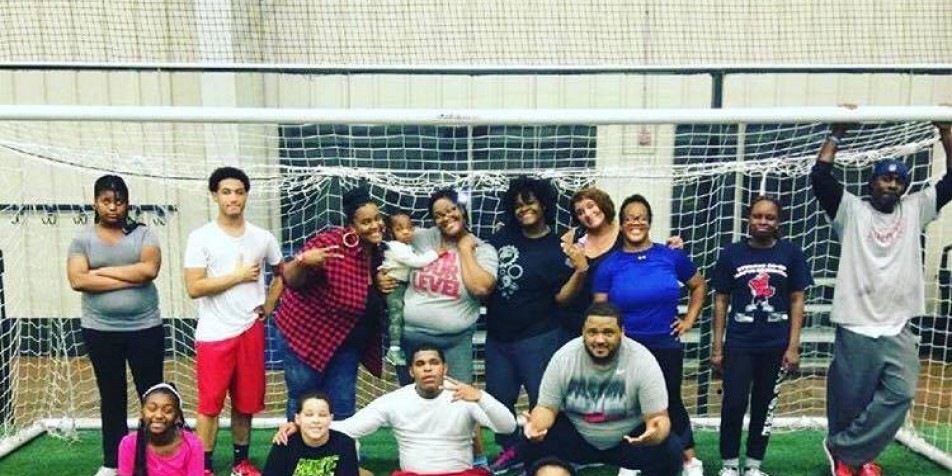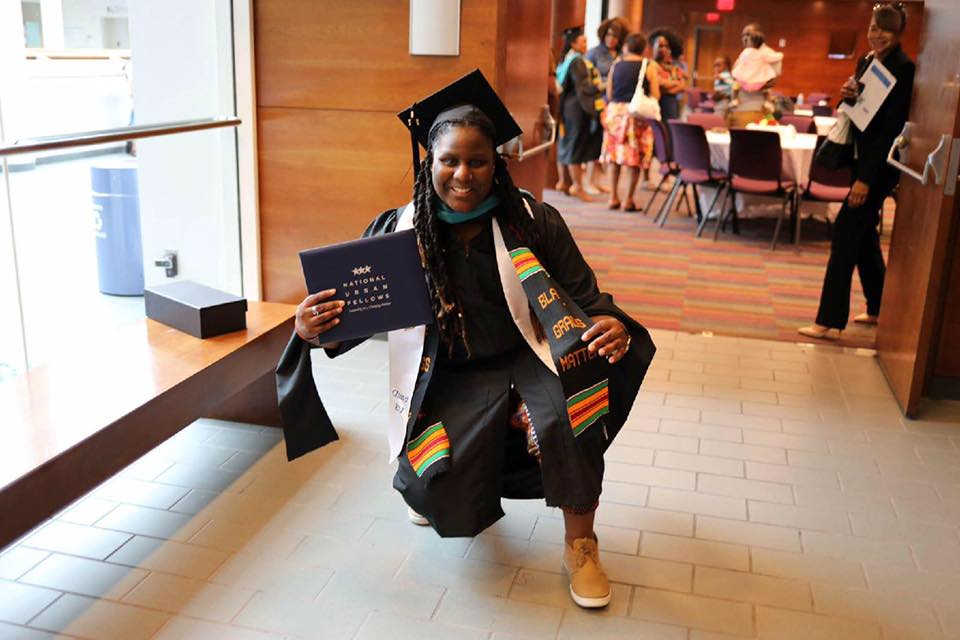Teens Need Families, No Matter What: What Will It Take to Make Success Stories the Norm?

As part of National Adoption Month, we’re producing a special blog series focused on older youth in foster care and the importance of family and permanency.
Imagine the worst day you had recently. Who did you call? Was it your mom? Your dad? Sister? Your childhood best friend? Over 20,000 youth leave foster care without permanent connections; who will they have to rely on? Permanency, as defined in the child welfare field, is the goal of finding safe, permanent homes and families as quickly as possible for youth placed in out-of-home care (foster care).
Youth who age out of foster care are less likely to graduate high school or attend college. By age 26, only 4% of youth who aged out of care had earned a 4-year degree, and 36% experienced at least one episode of homelessness. Fifty-five percent of youth who have emancipated had three or more placements while in care, and 33% changed schools 5 or more times. Each move to a different home or school makes it more difficult to establish the lifelong connections.
Permanency takes many forms: reunification, adoption, guardianship, placement with relatives, or “Another Planned Permanent Living Arrangement” (APPLA). Regardless of its manifestation, permanency must include supportive, life-long connections. Yet, large numbers of youth leave the child welfare system without the vital connections that are crucial to adult success.
Today, in the wake of Thanksgiving and being surrounded by our loved ones, we are highlighting foster care alums who found their “forever families” – some with the support of the child welfare system and others on their own. As each youth is different, their network, clan, tribe, or family all look different, but without their family’s support they would not be where they are today. These stories show that youth are ready to be engaged in identifying supportive connections. The system must act with urgency, work with youth to understand their options, and help youth repair, build, and strengthen the networks and family ties they need and deserve.
The following stories have been edited for this blog. We are grateful for the openness and willingness to share of all our spotlighted young adults.
Amnoni’s Story

“Since aging out of the foster care system with little support from my biological family and the child welfare system, I did not receive the sense of permanency that most child welfare professionals define as such. I had to learn how to navigate life so that I could thrive and succeed. I realized I had to redefine permanency for myself, so gaining social capital was the gateway to me reaching permanency. It allowed me to connect to opportunities to build myself and connect with others. Equally, having and maintaining consistent supports in my life helped to stabilize the chaos happening around me. My high school principal and teacher have been two key figures in my life and have supported me in holistic ways. They continue support me and are my biggest advocates today. These experiences have created the network of support I define today as permanency.”
Amnoni lives with her partner, Cristal (featured below) in California and has also re-connected with her biological family. She graduated July, 2017, from the National Urban Fellows program with her Master’s in Public Administration and was awarded the Capstone Award for her graduate thesis, Building a Pathway to Resilience: How the Philanthropic Sector Can Include Social Capital Development Efforts for Transition Age Youth.
Cristal’s Story
“Permanency, for me, means a lifelong relationship like that of a family. Honestly, in foster care I never felt a sense of permanency. I was in kinship care with a family member and felt I was where things would constantly get better and then get worse. We would have one great year and then have two horrible years. That cycle went on until I turned 17 and became homeless. Now, as an adult I have achieved permanent relationships. I met those people in college through the Guardian Scholars Programs who helped me to shape and develop my sense of family.”
Cristal lives in California with her partner Amnoni (featured above). Cristal is a law student and has recently re-discovered her creative side. She now has a website to spread her story as an alum of fostercare and inspire others.
Christina’s Story
“I found the family I had been afraid to hope for.”
“At age five, I was placed into foster care. Eight years and fifteen foster homes later, I requested that my social worker explore adoption. At thirteen, with the seemingly impossible dream of attending college, having a family seemed the only way to make my dream a reality. My only hesitation was the prospect of losing touch with my biological sister. Luckily my social worker knew and explained the process of open adoption. At, age 14, I found the family I had been afraid to hope for.”
Christina is now a Zubrow Fellow at Juvenile Law Center and enjoys the opportunity to advocate for the rights, equity, and opportunity for all youth in care.
David’s Story

“I don't think I knew what adoption was until I was older. I knew kids who were adopted but I didn't think it was a reality for myself. My forever family now - my two dads, Mark and Scott - changed that. I was adopted at 21. While everyone defines family differently, I define family as someone who loves and supports you through your good and bad times. Just knowing you belong is family enough for me. After we became a family four years ago, we never turned back. We love each other so much and I think that speaks more volumes than words can. My parents support me in all things I do and want to do. They support my schooling, job interests, and relationships even when they know some of my choices are not the best. They are there for me for whatever I need, and I love them so much more for that.”
David recently graduated with honors from the College of Sequoia in California and has four Associate Degrees in Communications, Sign Language, Arts and Humanities, and Elementary Teacher Preparation. David and his family live in Lacey, Washington.
Ivy-Marie’s Story
“For me, permanency was knowing that I would have a forever home and be forever loved, that I had a shoulder to lean on and an ear to talk to. All the support I received was from my foster family. At 15, after attempts by the state to remove me, my foster mother, Dache’ Hammonds, gave up the stipend to ensure she could have me in her home forever. The judge ordered that I should never be removed. My family is made up of 5 women, and we are each other have. While I now live on my own I am with and connect with my family every day."
Ivy- Marie graduated May 2017 with her Bachelor of Science in Criminal Justice and plans to advocate for and work with other foster children.
Marcia’s Story
“We are all a family.”
“Creating permanent and lasting connections isn’t always connected to legal documents but are the naturally formed bonds and connections that last through changing homes, schools, and across county, and state lines. I formed these lasting bonds with the foster family me and my sister were placed with for 8 years. Then, at 12, I was re-unified with my biological family. I struggled returning home to my biological family because of my fear and anxiety of leaving the home I had known for so long and the people I grew to love. After returning home, I maintained contact with my foster family for a time, but lost touch until college. I reconnected with my foster family and now spend holidays with both my bio family and foster family. We take trips together and support each other. We are all a family.”
Marcia is now a social worker at Juvenile Law Center and enjoys using various forms of art to help young people tell their stories and heal.
Juvenile Law Center advocates for older youth in foster care to have the opportunity to achieve their vision of permanency through a variety of initiatives. Through our work, we hope to ensure that every youth in the child welfare system has the opportunity to make a successful transition to adulthood. To do this, they need to be connected with family, community, resources, and support systems that helps them meet their needs and have a fair shot at achieving their hopes and dreams for their future. We do this work by:
- advocating for policies and laws that require that the child welfare system make all efforts to understand what permanency and family means to young people and provide the support to make that vision a reality;
- ensuring that youth have access to an age-appropriate and trauma informed extended foster care system while we work with them to achieve permanency; and
- ensuring that youth have a voice in policy development and implementation through our youth advocacy programs, Youth Fostering Change and Juveniles for Justice.
Resources Authored by Individuals Featured Above:
David Rivera, Improving Placement Stability for All Youth in Foster Care, Congressional Coalition on Adoption Institute 2016 Foster Youth Internship Program Report. p.35.
Ivy-Mare Washington, Running from the System: Improving Foster Youth Placement Stability and Runaway Prevention, Congressional Coalition on Adoption Institute 2016 Foster Youth Intership Program Report. p.32.